Echoes of Genocide
The Tuol Sleng Genocide Museum in Phnom Penh, Cambodia, stands as a powerful and harrowing reminder of the atrocities committed during the Khmer Rouge regime. This former high school, repurposed into a prison and torture center, now serves as a memorial to the countless victims who suffered and perished here.
The museum presents chilling evidence of the brutal conditions endured by prisoners, including torture devices, cell blocks repurposed from classrooms, and detailed records and photographs documenting the fates of many. The remnants of barbed wire and the stark, grim artifacts underscore the severe inhumanity inflicted upon the captives.
One of the most poignant exhibits is a human skull, a somber testament to the lives lost and the extreme violence of the regime. Through its exhibits and preserved spaces, the Tuol Sleng Genocide Museum ensures that the memory of those who suffered is honored and the lessons of this dark chapter in history are never forgotten.
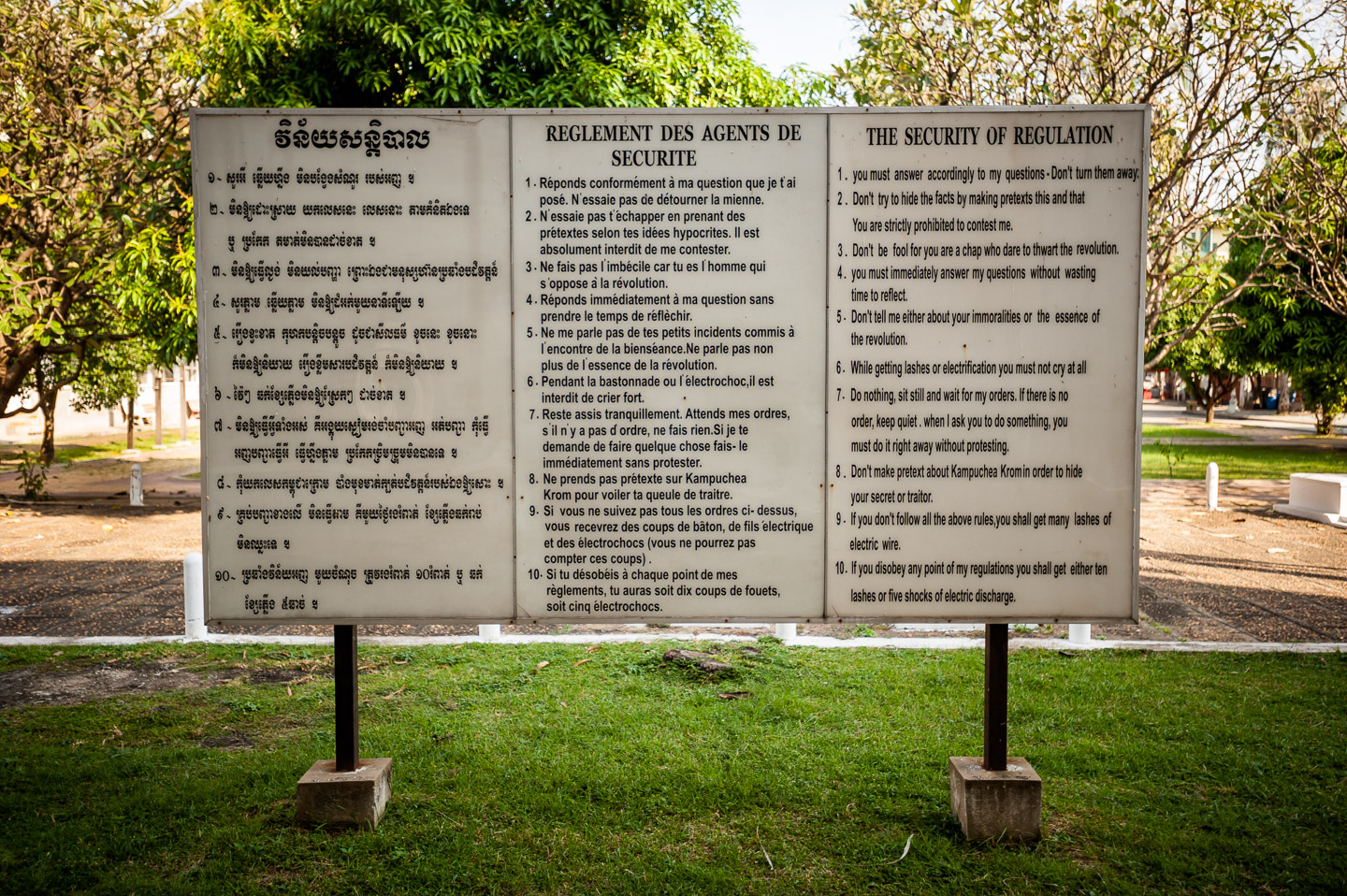
"While getting lashes or electrification you must not cry at all," reads a chilling rule of conduct at the Tuol Sleng Genocide Museum.
This former high school was repurposed as a Khmer Rouge S-21 prison in Phnom Penh, Cambodia.
December 6, 2013.
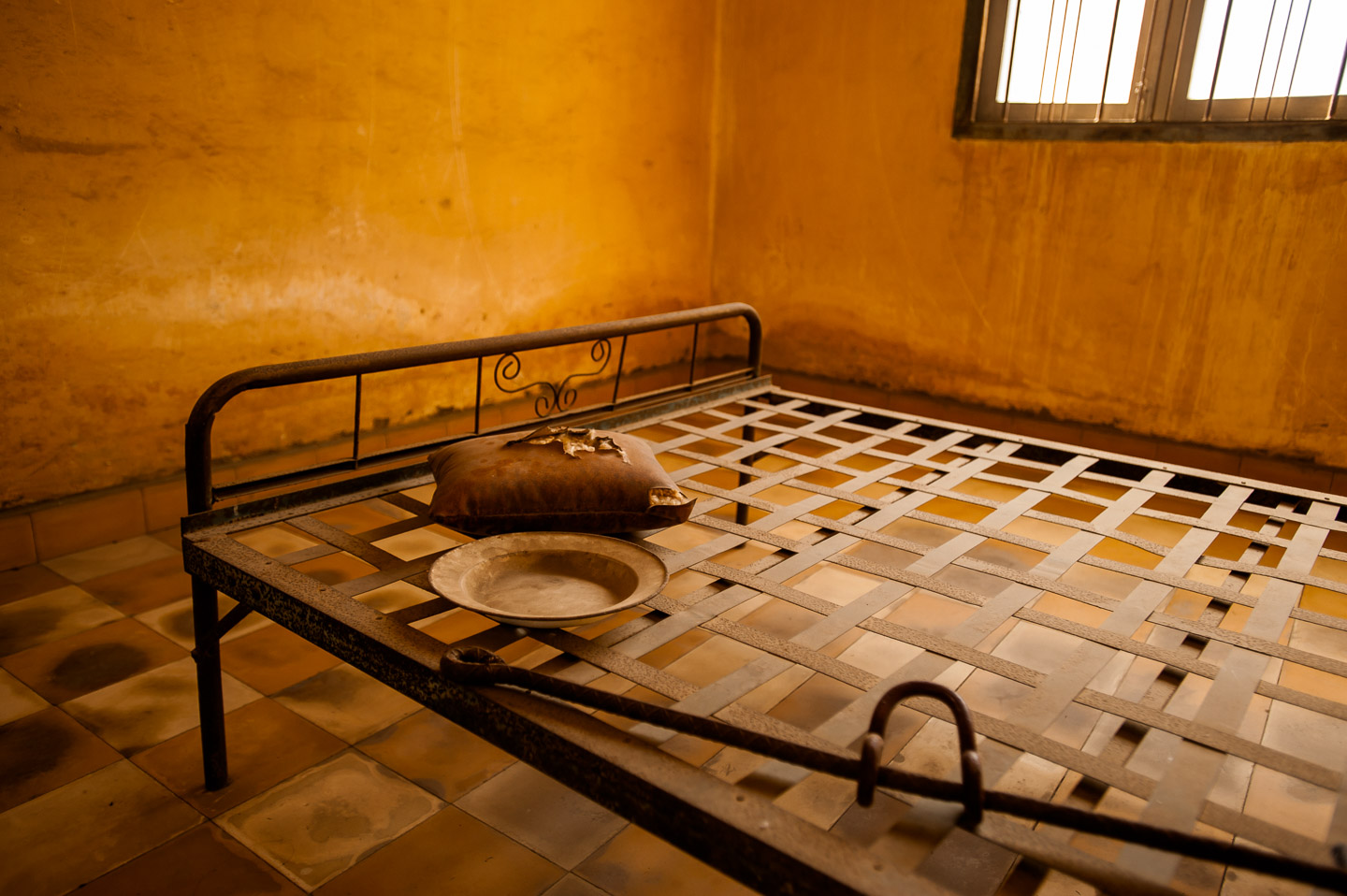
A torture bed used to extract 'confessions' from prisoners during the Khmer Rouge regime.
This bed is displayed in one of the many rooms of the S-21 prison, now part of the Tuol Sleng Genocide Museum in Phnom Penh, Cambodia.
December 6, 2013.
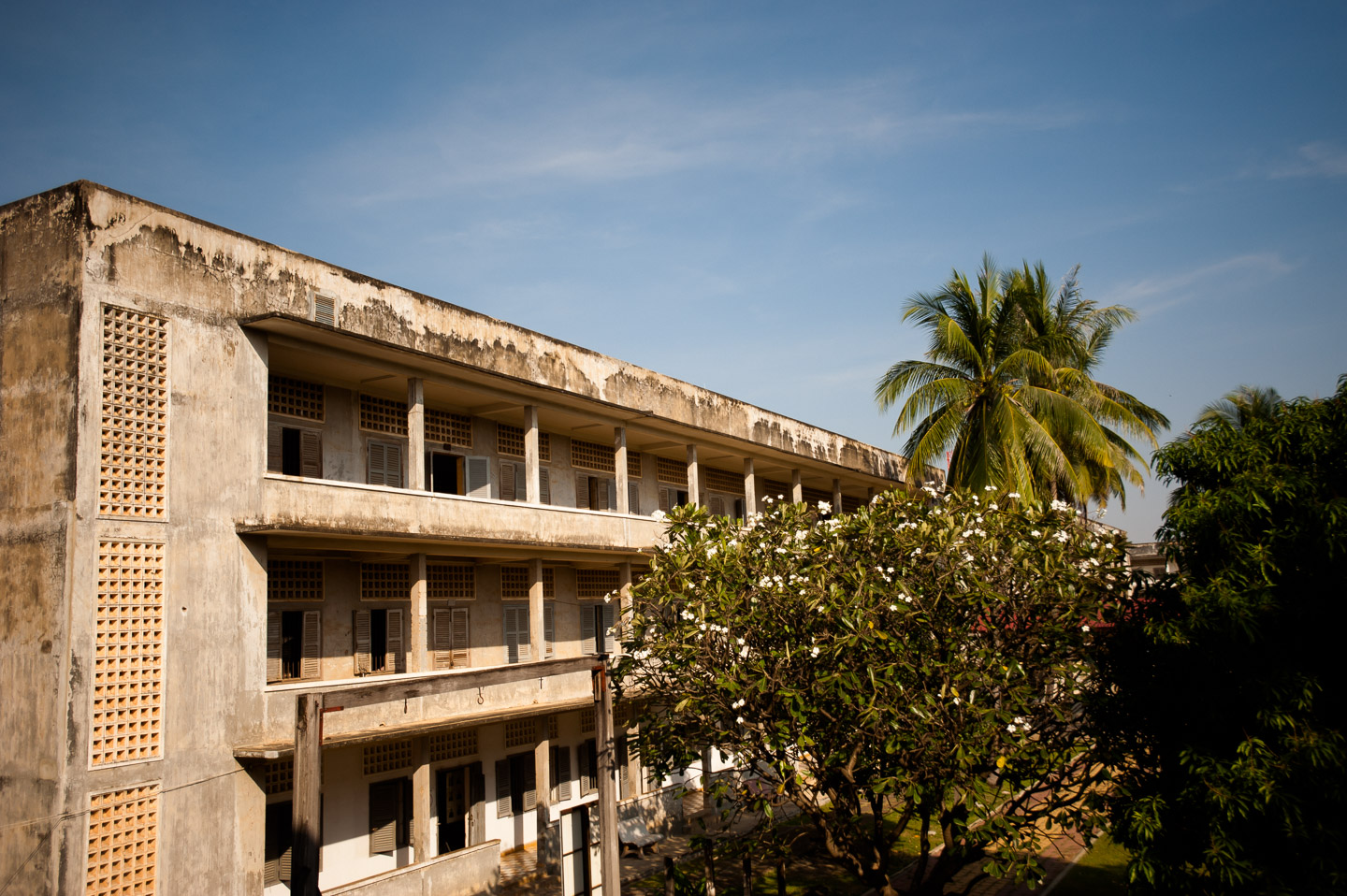
One of the wings of the former Khmer Rouge S-21 prison, now Tuol Sleng Genocide Museum.
This building in Phnom Penh, Cambodia, serves as a haunting reminder of the atrocities committed during the Khmer Rouge regime.
December 6, 2013.
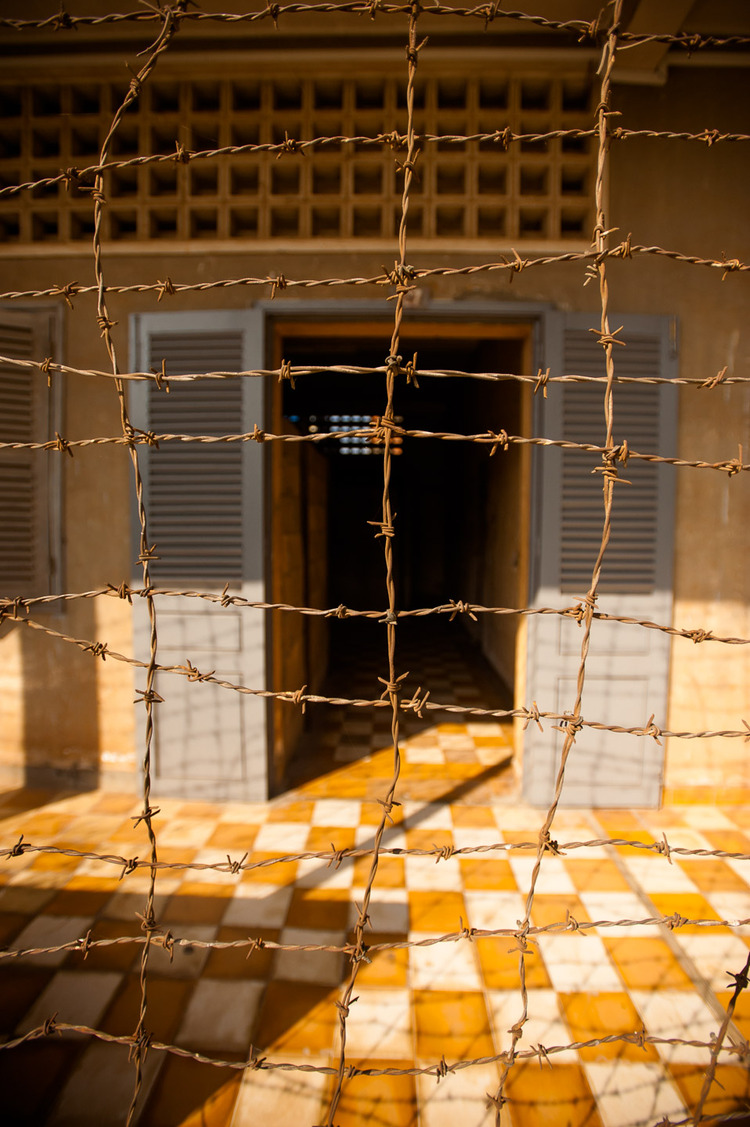
Barbed wire still wraps around some of the buildings used as cell blocks at the former S-21 prison, now Tuol Sleng Genocide Museum.
The remnants of barbed wire serve as a stark reminder of the harsh conditions imposed on prisoners during the Khmer Rouge era.
Phnom Penh, Cambodia, December 6, 2013.
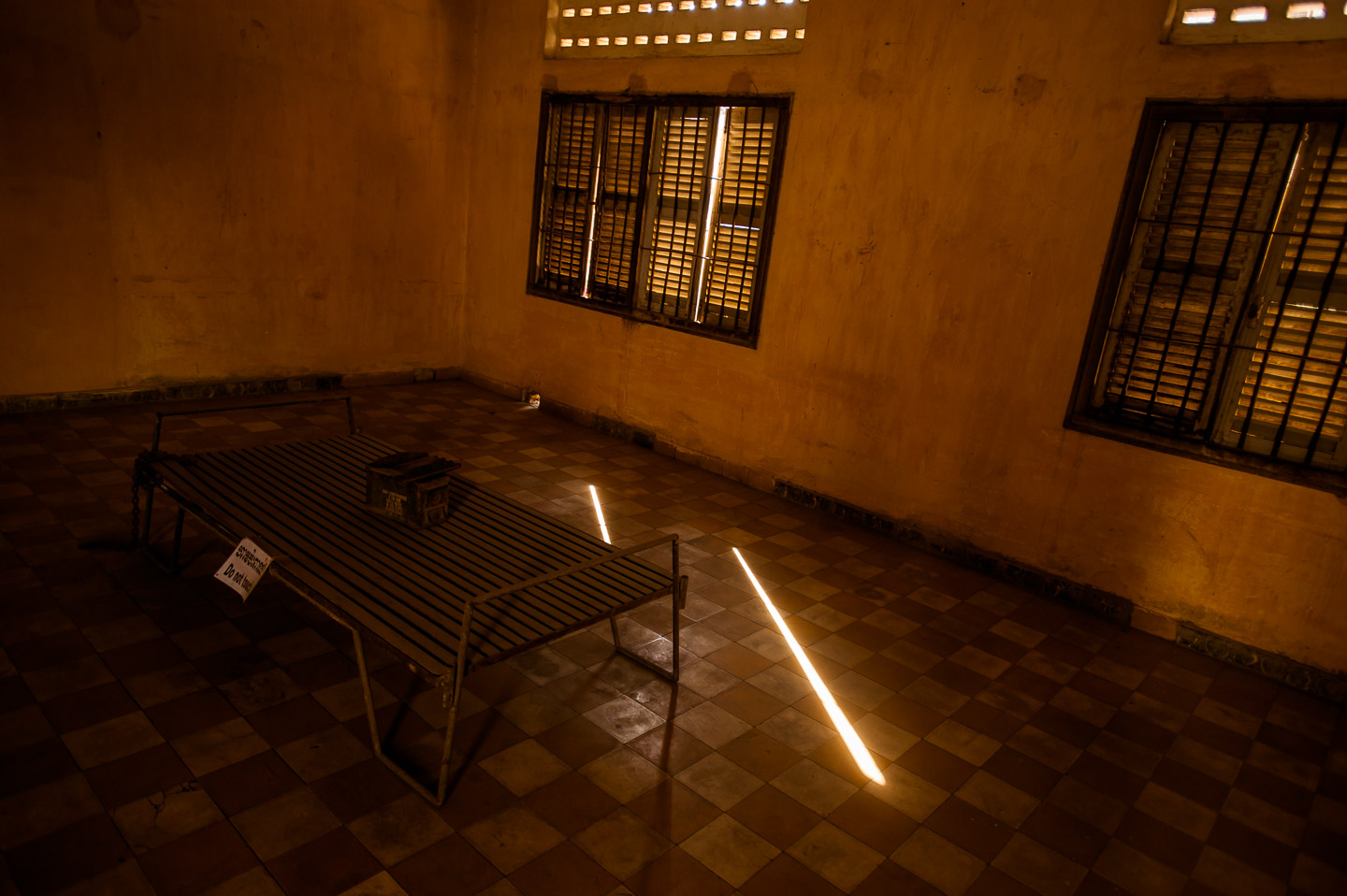
Detainment and interrogation room at the Khmer Rouge S-21 prison, now Tuol Sleng Genocide Museum.
This room, once used for detaining and interrogating prisoners under severe duress, now stands as a haunting testament to the brutality of the Khmer Rouge regime.
Phnom Penh, Cambodia, December 6, 2013.
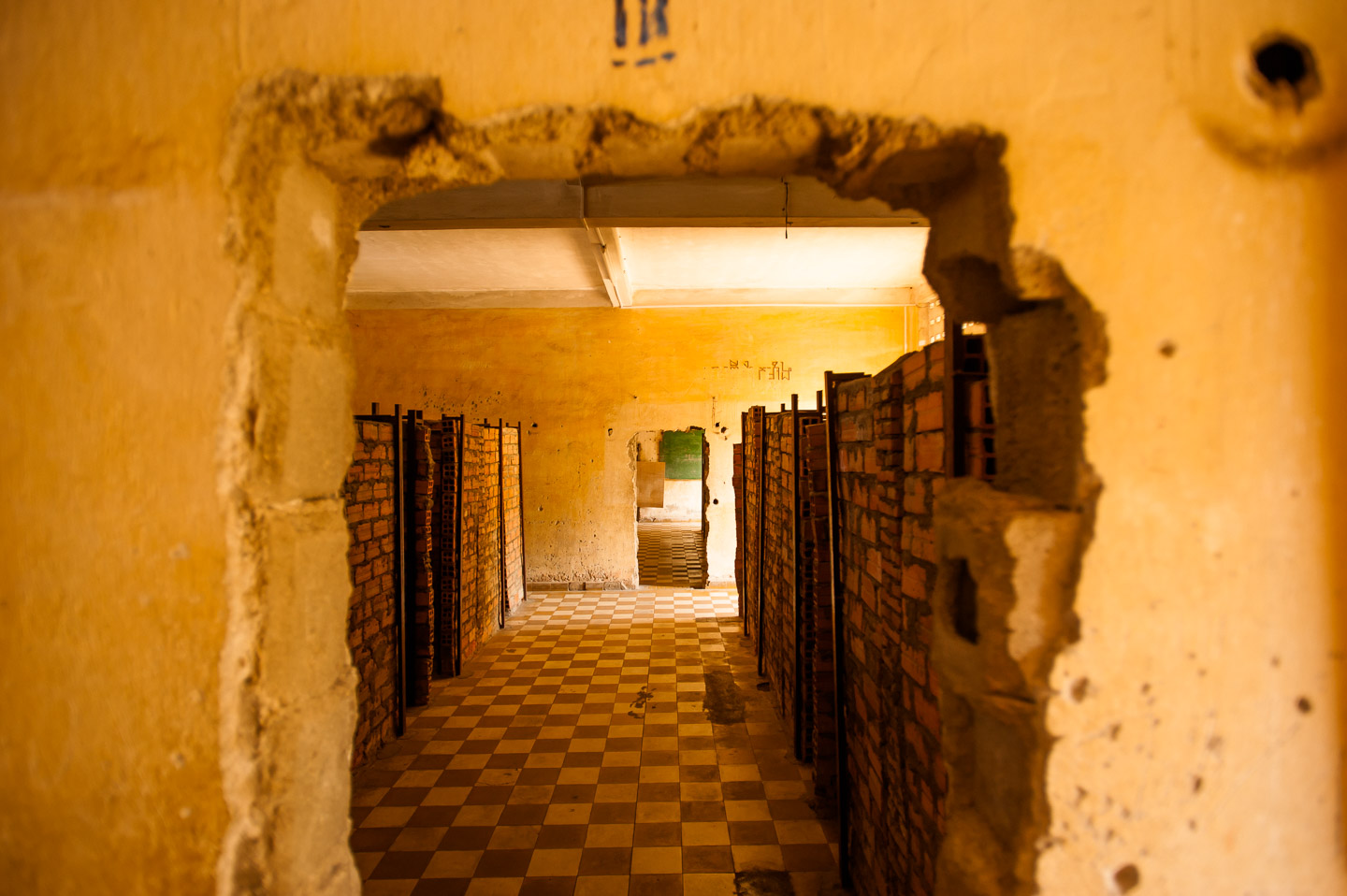
A classroom repurposed as a cell block at the Khmer Rouge S-21 prison, now Tuol Sleng Genocide Museum.
Originally a place of learning, this classroom was transformed into a cell block during the Khmer Rouge regime, reflecting the tragic misuse of educational spaces for inhumane purposes.
Phnom Penh, Cambodia, December 6, 2013.
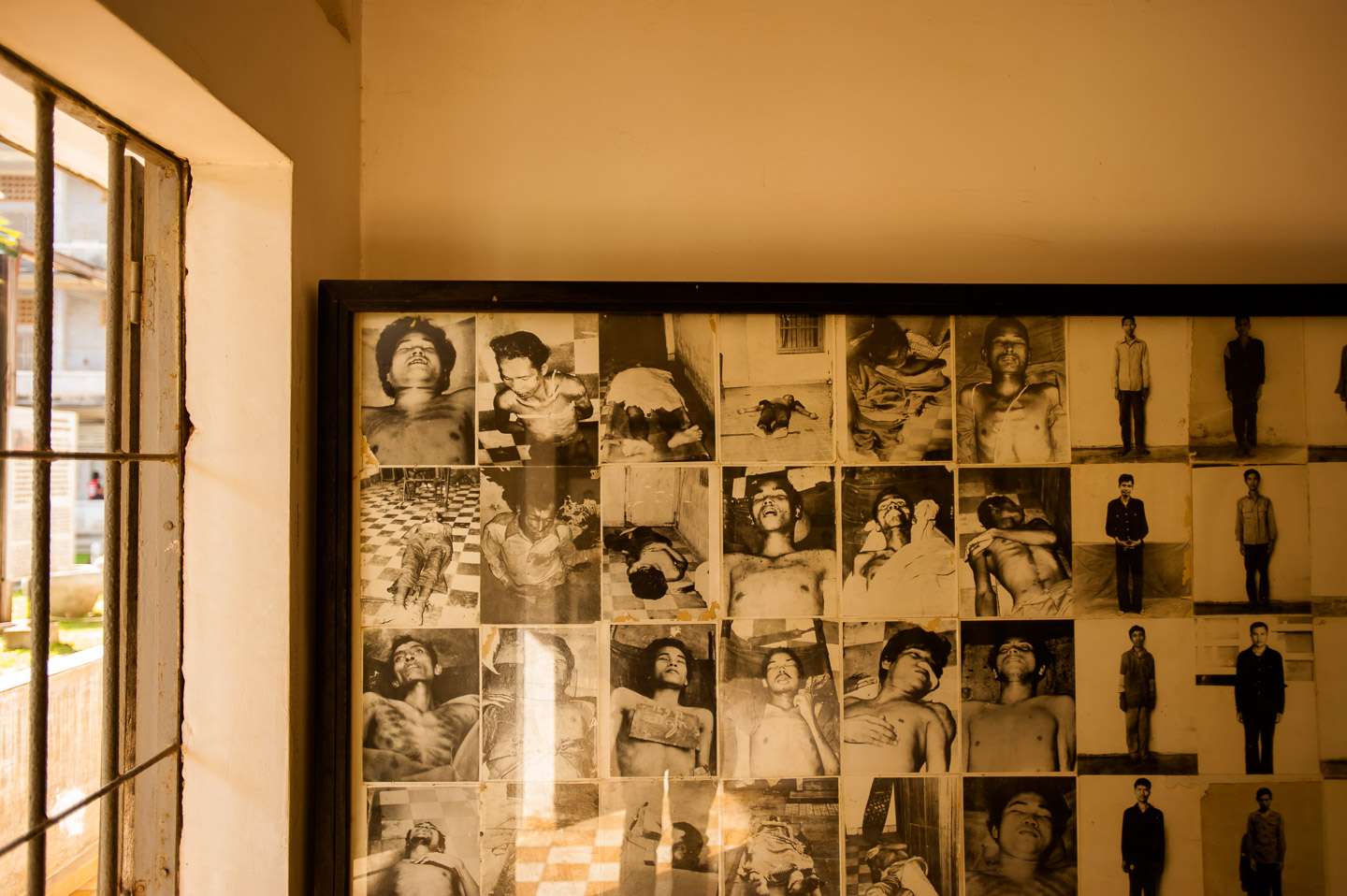
Thorough records and photographs of prisoners before and after their execution kept by their captors at the Khmer Rouge S-21 prison, now Tuol Sleng Genocide Museum.
Detailed records and haunting photographs document the prisoners’ identities and fates, serving as a grim reminder of the atrocities committed during the Khmer Rouge era.
Phnom Penh, Cambodia, December 6, 2013.

A human skull, belonging to one of the hundreds of thousands of prisoners who never made it out of the Khmer Rouge S-21 prison, now Tuol Sleng Genocide Museum.
This skull stands as a somber testament to the countless lives lost and the atrocities committed during the Khmer Rouge regime.
Phnom Penh, Cambodia, December 6, 2013.